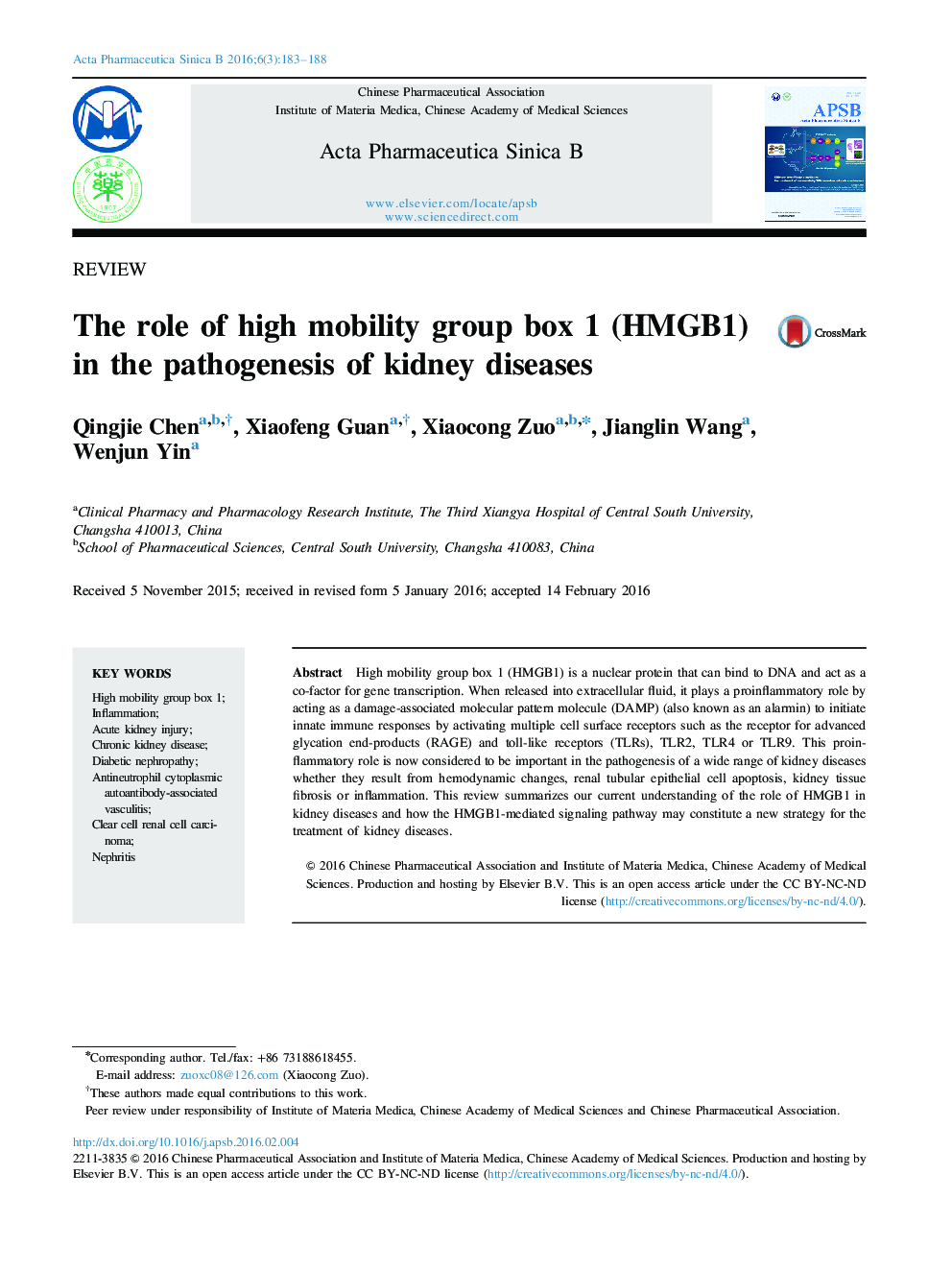| Article ID | Journal | Published Year | Pages | File Type |
|---|---|---|---|---|
| 2474486 | Acta Pharmaceutica Sinica B | 2016 | 6 Pages |
High mobility group box 1 (HMGB1) is a nuclear protein that can bind to DNA and act as a co-factor for gene transcription. When released into extracellular fluid, it plays a proinflammatory role by acting as a damage-associated molecular pattern molecule (DAMP) (also known as an alarmin) to initiate innate immune responses by activating multiple cell surface receptors such as the receptor for advanced glycation end-products (RAGE) and toll-like receptors (TLRs), TLR2, TLR4 or TLR9. This proinflammatory role is now considered to be important in the pathogenesis of a wide range of kidney diseases whether they result from hemodynamic changes, renal tubular epithelial cell apoptosis, kidney tissue fibrosis or inflammation. This review summarizes our current understanding of the role of HMGB1 in kidney diseases and how the HMGB1-mediated signaling pathway may constitute a new strategy for the treatment of kidney diseases.
Graphical abstractHMGB1 plays an important pathological role in different kidney diseases by activating receptors on cell membranes, particularly TLR2/4 and RAGE, and inducing inflammation. This review summarizes our current understanding of the role of HMGB1 in kidney diseases and further discusses its potential to provide protection against them.Figure optionsDownload full-size imageDownload as PowerPoint slide
